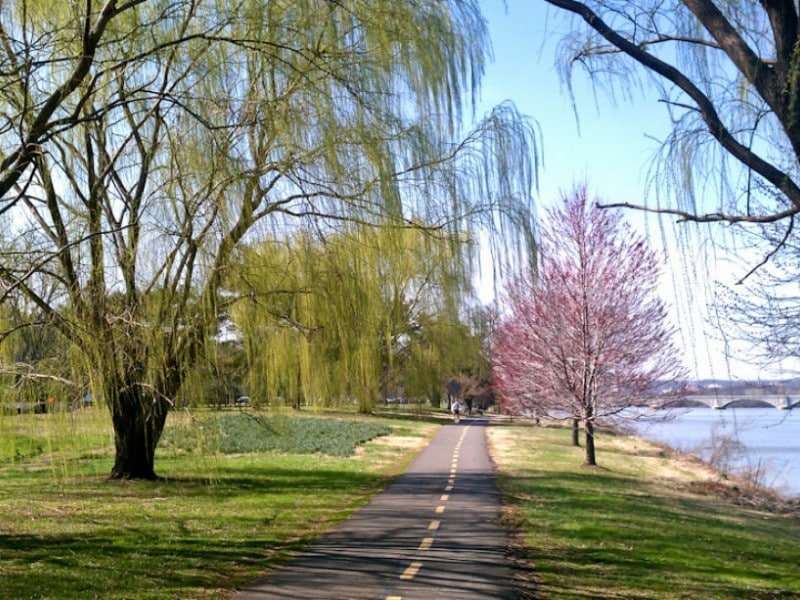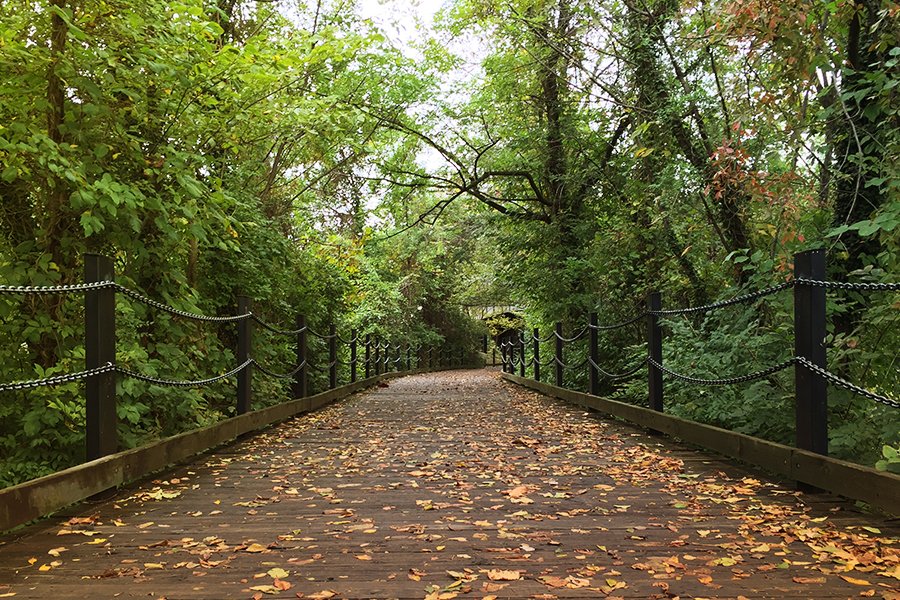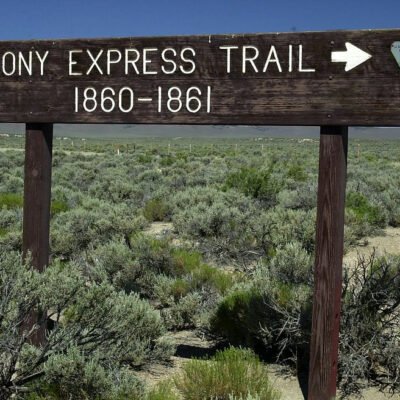Virginia’s Mount Vernon Trail ruins aren’t your typical tourist attraction. Nestled between the Potomac River and George Washington Memorial Parkway, this 18-mile trail runs from George Washington’s Mount Vernon Estate to Theodore Roosevelt Island. It’s a favorite for cyclists, joggers, and walkers. But what many don’t realize is that this scenic trail holds mysterious, often-overlooked ruins that quietly whisper stories from the past.
In this article, we’ll take you on a journey through the Mount Vernon Trail’s forgotten and hidden spots — abandoned buildings, crumbling foundations, old ferry landings, and Civil War-era remnants — and show you why these ruins are worth discovering.
What is the Mount Vernon Trail?
Before we dive into the ruins, let’s understand what the Mount Vernon Trail is all about.
The Mount Vernon Trail is a paved, multi-use pathway stretching approximately 18 miles. It hugs the western bank of the Potomac River and connects key landmarks like:
- Mount Vernon Estate (home of George Washington)
- Old Town Alexandria
- Gravelly Point (great for watching planes)
- Arlington National Cemetery
- Theodore Roosevelt Island
With sweeping views of the Washington, D.C. skyline, this trail offers more than just exercise and sightseeing — it also holds pieces of Virginia’s hidden history.
Mount Vernon Trail Ruins: Forgotten History in Plain Sight

Dyke Marsh Ruins
Located just south of Alexandria, Dyke Marsh is a freshwater tidal wetland managed by the National Park Service. While most people come here to bird-watch or enjoy nature, few notice the ruins left behind by the Potomac Sand and Gravel Company, which operated here in the early 1900s.
Walk along the boardwalk or venture off-trail slightly and you’ll find:
- Old pilings sticking out of the water
- Concrete foundations from machinery
- Rusted metal debris
These remnants are all that’s left of a once-bustling industrial site. The company extracted sand and gravel for construction, damaging the marshland until the government stepped in to protect it in the 1970s.
Daingerfield Island: An Abandoned Airfield?
Between Alexandria and Ronald Reagan Washington National Airport lies Daingerfield Island, a spot often missed by tourists. Today, it hosts a marina and a sailing center. But if you look carefully, you might see signs of its past — when it was once considered for an airfield and training ground.
While no full airstrip was ever completed here, you can still find:
- Concrete pads that hint at former military or aviation plans
- Ruins of old boathouses
- Abandoned utility buildings
It’s a quiet place now, but it holds whispers of what could have been.
Jones Point Lighthouse and Forgotten Forts
Further down the trail in Alexandria sits the Jones Point Lighthouse, built in 1855. While the lighthouse is well-known, few visitors pay attention to the foundation ruins nearby, likely remnants of 19th-century river trade buildings and defense posts.
Additionally, this area hides old Civil War-era embankments, some just mounds now covered in brush. These were part of Fort Foote and other defensive strategies protecting the capital during the Civil War.
Roaches Run and Its Mysterious Walls
Just past the airport lies a peaceful body of water called Roaches Run Waterfowl Sanctuary. This spot looks entirely natural today, but if you stray from the trail, you’ll spot:
- Stone walls that once lined canal systems
- Remnants of docks or water management infrastructure
- Cracked cement slabs, possibly from storage buildings or water tanks
There’s no detailed signage here, making the area feel mysterious and perfect for adventurous explorers curious about hidden history.
Belle Haven Park: Traces of an Old Resort
Belle Haven Park is a busy stop for cyclists and picnickers, but 100 years ago, it was home to a luxurious riverside resort and amusement park. Known as Riverside Park, it had dance halls, boat rides, and even a roller coaster.
Today, all that remains are:
- Stone paths disappearing into the woods
- Collapsed stone piers along the river
- A few old iron rails embedded in the ground
Time and weather have erased most signs of Riverside Park, but if you walk slowly and look closely, history reveals itself.
Why Are These Ruins Important?
These ruins may not be flashy, and there aren’t always signs or guides to explain them. But they serve as quiet reminders of the region’s transformation — from industry to recreation, from war to peace, from private land to protected space.
They represent:
- Lost industries (like gravel mining and shipping)
- Changes in land use (from military to recreational)
- Unrecognized heritage (especially African American labor and trade routes)
- Environmental challenges (how past industry damaged wetlands)
By learning about these ruins, we connect more deeply with the trail — not just as a scenic bike route, but as a living museum of Virginia’s evolution.
Tips for Discovering the Mount Vernon Trail’s Hidden Ruins

If you’re planning to explore the ruins yourself, here are a few helpful tips:
Go Slow
Many ruins are easy to miss if you’re biking too fast. Take your time, especially in wooded areas or near the water’s edge.
Use Satellite Maps
Sometimes the best way to find these ruins is to look for odd shapes or paths using Google Maps or Apple Maps in satellite mode.
Wear Good Shoes
Venturing off the paved trail means encountering mud, brush, or uneven terrain. Dress accordingly.
Respect Nature and History
These ruins are unprotected and fragile. Don’t climb on structures or remove any artifacts. Take only pictures and leave only footprints.
Bring a Friend
Some of these areas are isolated. For safety and better exploration, go with someone who enjoys history or hiking.
Hidden History That’s Still Alive
While the Mount Vernon Trail is known for its beautiful views and access to historical landmarks like George Washington’s estate, it’s the less obvious sites that offer a more personal, adventurous connection to the past.
The ruins along the trail aren’t just broken bricks and rusty metal. They are traces of lives once lived, of work once done, and of a world slowly reclaimed by nature.
Every crumbling foundation, every moss-covered post in the water, tells a story — if you’re willing to listen.
Final Thoughts: Should You Explore the Mount Vernon Trail Ruins?
Absolutely.
Whether you’re a history lover, photographer, nature enthusiast, or someone simply looking for a new adventure, the Mount Vernon Trail ruins offer a rare combination of natural beauty and hidden history. You won’t find ticket booths, guided tours, or souvenirs — just quiet places where the past still echoes among the trees and riverside stones.
It’s free, it’s open year-round, and all it takes is a curious eye to uncover these forgotten gems.
So next time you’re on the trail, slow down. Look around. The ruins are there, waiting for someone to remember.
Do Follow USA Glory On Instagram
Read Next – Explore the Mysteries of Effigy Mounds National Monument






